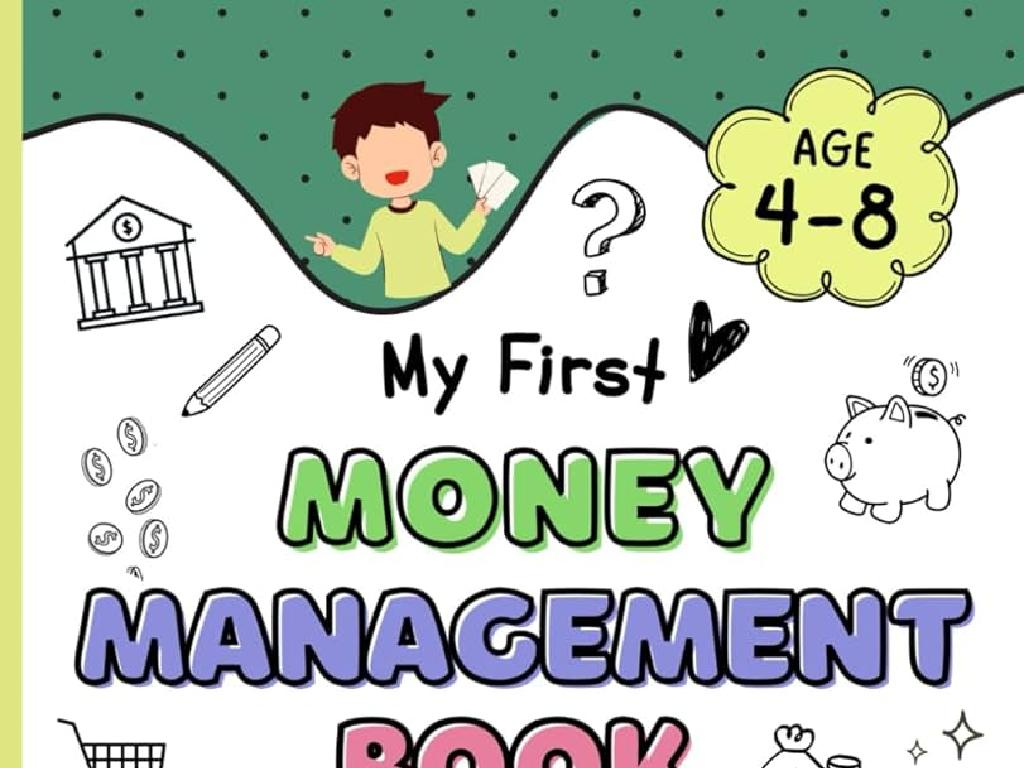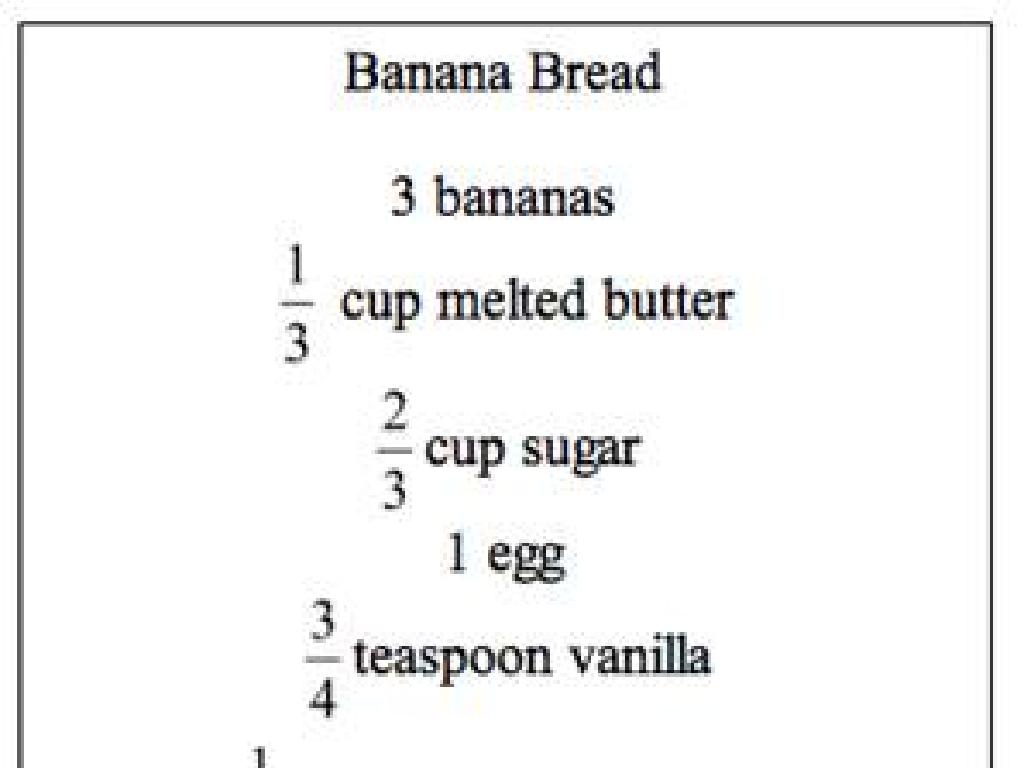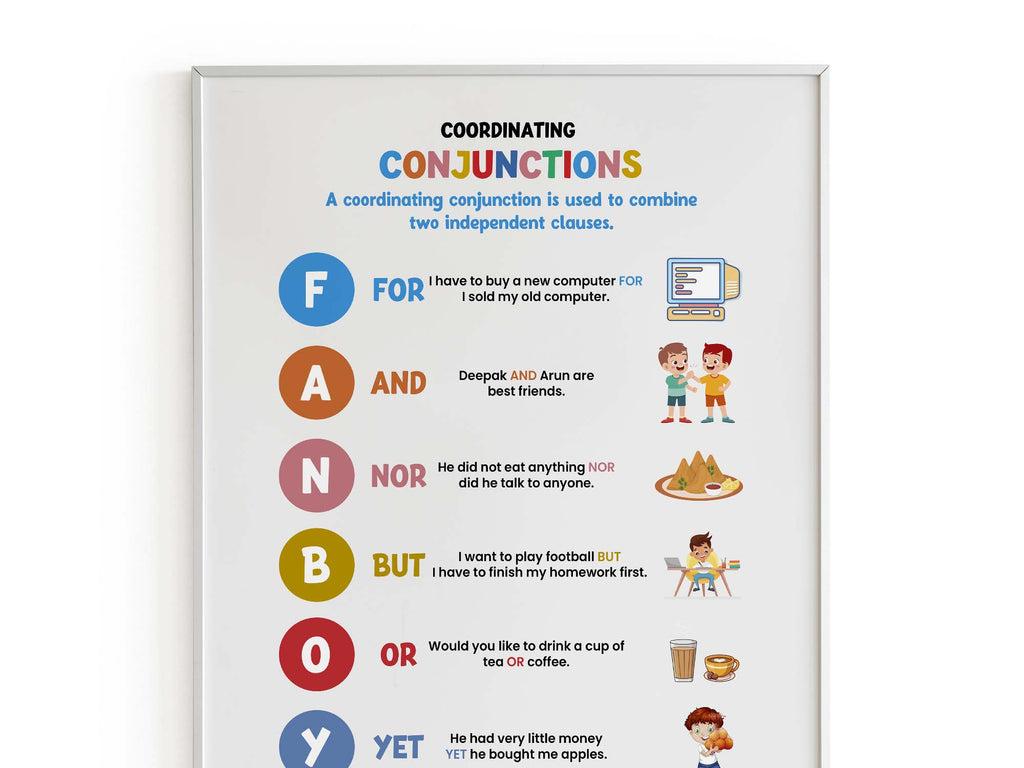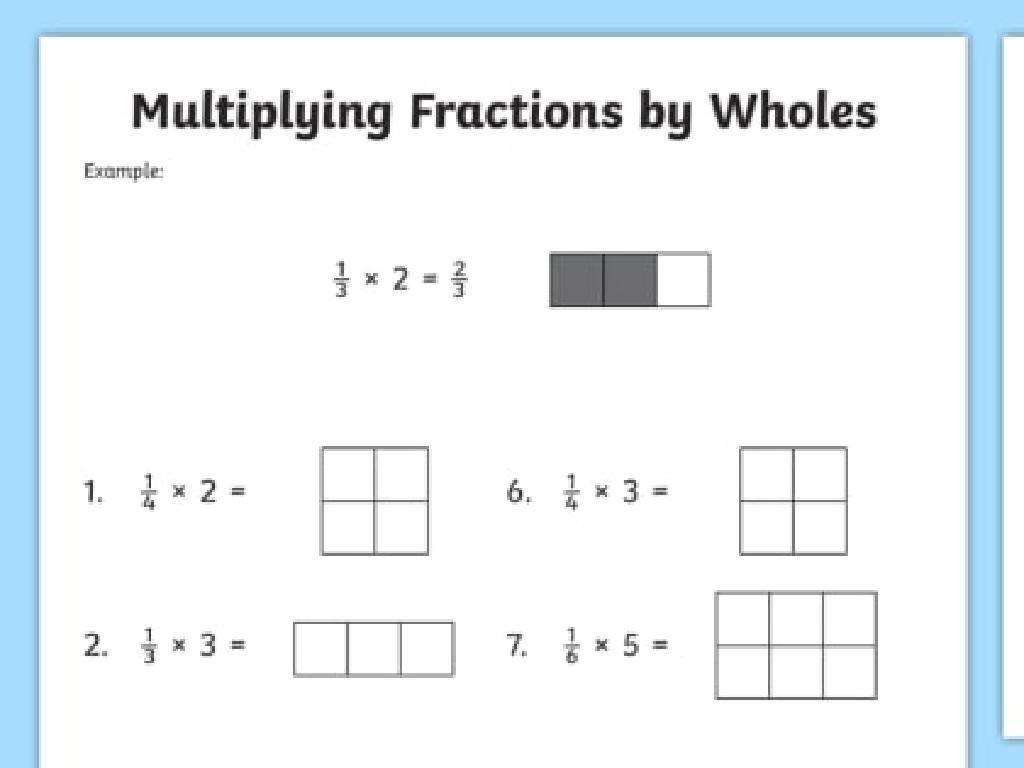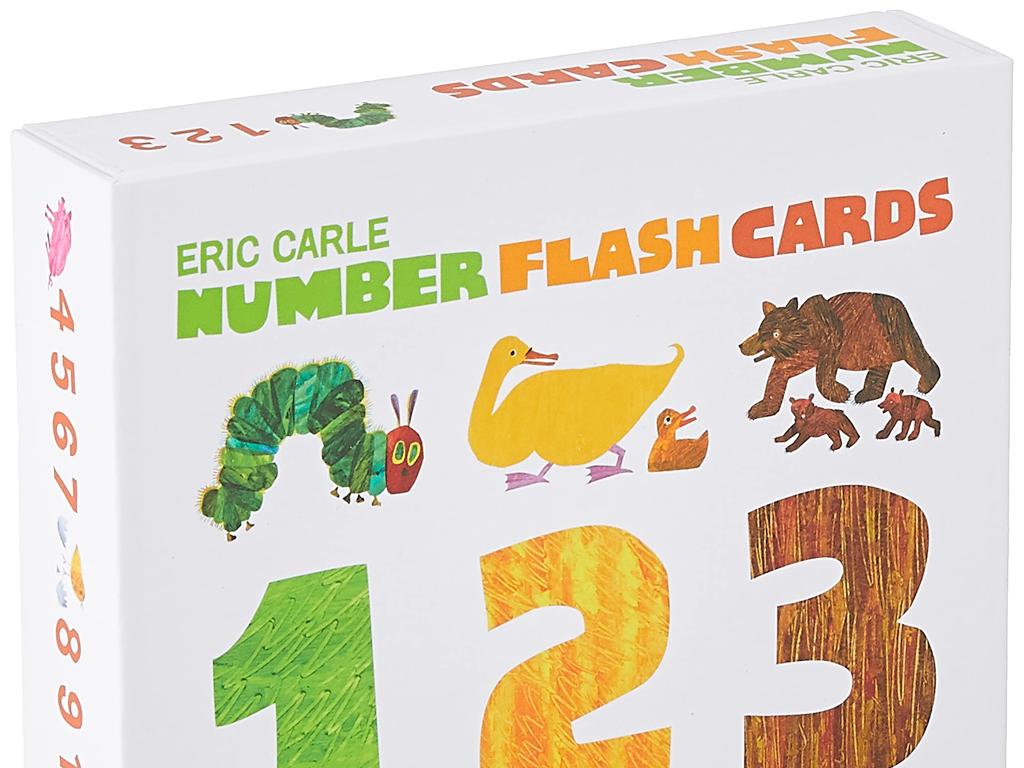Word Problems Involving Addition And Subtraction - Up To 10
Subject: Math
Grade: First grade
Topic: Addition And Subtraction Word Problems Up To 10
Please LOG IN to download the presentation. Access is available to registered users only.
View More Content
Math Adventures: Becoming Math Detectives
– Embrace your inner Math Detective
– Solve addition & subtraction mysteries
– Find the sum or difference in word problems
– Use counting to find clues
– Count objects or numbers to help solve problems
– Get set for a math adventure
|
In this engaging math lesson, students will take on the role of Math Detectives to solve word problems involving addition and subtraction up to 10. Encourage them to look for keywords in the problems that indicate which operation to use. Use props or visual aids to make the session interactive. For example, use toy fruits to demonstrate addition by combining groups, or subtract by taking some away. Prepare a few simple word problems for them to solve, and guide them through the process of using their counting skills to find the answers. This activity will help reinforce their understanding of basic math operations and improve their problem-solving abilities.
Understanding Word Problems
– Word problems are number stories
– Discover hidden numbers in the story
– Read carefully to find numbers and clues
– Use addition or subtraction
– Decide if you should add or take away
– Find the answer to the story
– Solve the problem to complete the story
|
This slide introduces first graders to the concept of word problems as stories that involve numbers. Emphasize that word problems require careful reading to identify the numbers and the action taking place whether it’s adding more to a group or taking some away. Encourage students to look for keywords that indicate addition (like ‘altogether’ or ‘in total’) or subtraction (such as ‘left’ or ‘fewer’). Use simple, relatable stories to practice, such as having a certain number of apples and adding or removing some, then finding out how many are left. The goal is to make them comfortable with translating a narrative into a mathematical equation and solving it.
Understanding Addition: Combining Groups
– Addition means putting together
– We combine two groups for a total
– Example: 2 apples + 3 apples
– Starting with 2 apples, add 3 more, now we have 5 apples!
– Addition gives us a bigger group
|
This slide introduces the concept of addition as a way of combining two groups to make a bigger group. It’s important to use tangible examples that first graders can relate to, such as combining groups of apples. Show how we start with a certain number of items, add more, and then count the total to find the answer. Use visual aids like actual apples or apple cutouts to demonstrate this concept in class. Encourage students to think of addition as not just numbers on a page, but as a real-world tool they can use to combine things together. After explaining, ask students to come up with their own addition examples using toys or classroom objects.
Understanding Subtraction: Taking Apart and Taking From
– Subtraction means taking away
– Making a smaller group
– Example: 5 – 2 = 3
– If you have 5 oranges and eat 2, you have 3 left.
– Practice with real objects
– Use toys or snacks to subtract in a fun way.
|
This slide introduces the concept of subtraction to first graders by explaining it as the process of taking away from a group to make it smaller. Use tangible examples like oranges, as in the slide, to illustrate subtraction in a way that is relatable to the students. Encourage them to use real objects like toys or snacks to practice subtracting, which will help them understand the concept better. During the class, have different subtraction scenarios ready and guide the students through the process of ‘taking away’ to find the answer. Reinforce the idea that subtraction is not just about numbers but about understanding the concept of ‘less’ in a practical sense.
Solving Word Problems: Addition & Subtraction
– Read the problem story
– Understand the story to solve the math problem
– Spot clues for operations
– Words like ‘together’ mean add, ‘left’ means subtract
– Identify the numbers involved
– Look for and write down the numbers in the story
– Decide: Add or Subtract?
– Use clues to figure out if you combine numbers or find the difference
|
This slide is aimed at helping first graders tackle word problems involving addition and subtraction up to 10. Start by reading the problem out loud and ensure students understand the context. Highlight key words that indicate whether to add or subtract, such as ‘in all’ or ‘left’. Guide students to identify and circle the numbers in the problem. Then, help them decide on the operation based on the clues. Encourage them to use objects or drawings to visualize the problem. Practice with examples: ‘If you have 3 apples and get 2 more, how many do you have in all?’ (addition), or ‘You have 5 candies and eat 2, how many are left?’ (subtraction).
Solving Addition Problems
– Understand the problem
– What is Tom trying to figure out?
– Identify numbers to add
– Tom starts with 3 balloons, Sue gives 2 more.
– Add numbers together
– We use addition: 3 balloons + 2 balloons.
– Find the total number
– After adding, Tom has 5 balloons in total.
|
This slide is aimed at helping first graders understand how to solve addition word problems. Start by reading the problem together and discussing what is being asked. Then, identify the numbers involved in the problem. Next, demonstrate how to add these numbers together, using objects like counters or drawings if helpful. Finally, show how to write the answer in a complete sentence, reinforcing the concept that addition gives us the total amount. Encourage students to use their fingers or objects to count if needed and remind them that practice makes perfect.
Solving Subtraction Problems
– Jen starts with 5 candies
– Jen eats 2 candies
– How many candies are left?
– We subtract the number of candies eaten from the total
– Jen has 3 candies left!
– 5 candies – 2 candies = 3 candies
|
This slide introduces students to solving basic subtraction word problems. Start by reading the problem aloud and ensure the students visualize the scenario with Jen and her candies. Explain that subtraction means taking away, and we’re finding out how many items remain. Use physical props like actual candies or counters to demonstrate the subtraction. After showing the subtraction, confirm the answer by counting the remaining items. Encourage students to use their fingers or draw pictures to solve similar problems. This hands-on approach helps solidify the concept of subtraction as ‘taking away’ in a fun and engaging manner.
Let’s Practice Together: Solving Word Problems
– I’ll read a word problem aloud
– Look for clues in the story
– Words like ‘in all’ or ‘altogether’ mean add
– Decide: add or subtract?
– Words like ‘left’ or ‘fewer’ mean subtract
– We’ll find the answer together
|
This slide is designed for a collaborative class activity where the teacher reads a word problem to the class, and together they work through the problem-solving process. The teacher should emphasize the importance of identifying keywords or phrases that indicate whether to add or subtract. For example, if the problem talks about combining amounts, students should recognize this as a cue to add. If the problem involves taking away, they should subtract. The teacher should guide the students through the problem, encouraging them to participate and think aloud as they come to a solution. Possible activities could include using physical objects to represent the problem, drawing pictures, or writing out the equation. The goal is to build confidence and understanding in solving addition and subtraction word problems up to 10.
Math Detective Activity: Solving Word Problems
– Become Math Detectives with your partner
– Solve the word problems I give you
– Use counting objects for help
– Objects like blocks or beads can be used to count
– Find the answers together
|
This activity is designed to encourage collaborative problem-solving and hands-on learning. Students will pair up and work as ‘Math Detectives’ to solve addition and subtraction word problems that involve numbers up to 10. Provide each pair with a set of counting objects such as blocks, beads, or counters. These objects will serve as visual aids to help them understand the concepts of adding to and taking away. As they work through the problems, circulate the room to offer guidance and ensure they are using the counting objects effectively. Possible activities include: 1) Finding how many items are left after some are taken away, 2) Determining the total number of items when two groups are combined, 3) Figuring out how many more are needed to reach a number, and 4) Comparing two sets to find the difference. This hands-on approach will help solidify their understanding of basic addition and subtraction.
Class Activity: Math Mystery Bags
– Pair up and receive a Mystery Math Bag
– Create word problems using objects
– Use addition or subtraction within 10
– Exchange bags with another pair
– Solve the new mystery problems
– Share how you solved the problems
|
This activity is designed to engage students with hands-on learning and peer collaboration. Each pair of students will receive a bag filled with various objects to create their own word problems involving addition and subtraction up to 10. Encourage creativity in problem formulation. After creating their problems, they will exchange their bags with another pair to solve the new set of problems. This will help them practice their problem-solving skills and understand different approaches to the same problem. As a teacher, facilitate the activity by ensuring each pair understands the instructions and provide assistance as needed. Possible objects for the bags: small toys, counters, or blocks. Ensure the problems are age-appropriate and guide the students to use clear language in their word problems.

